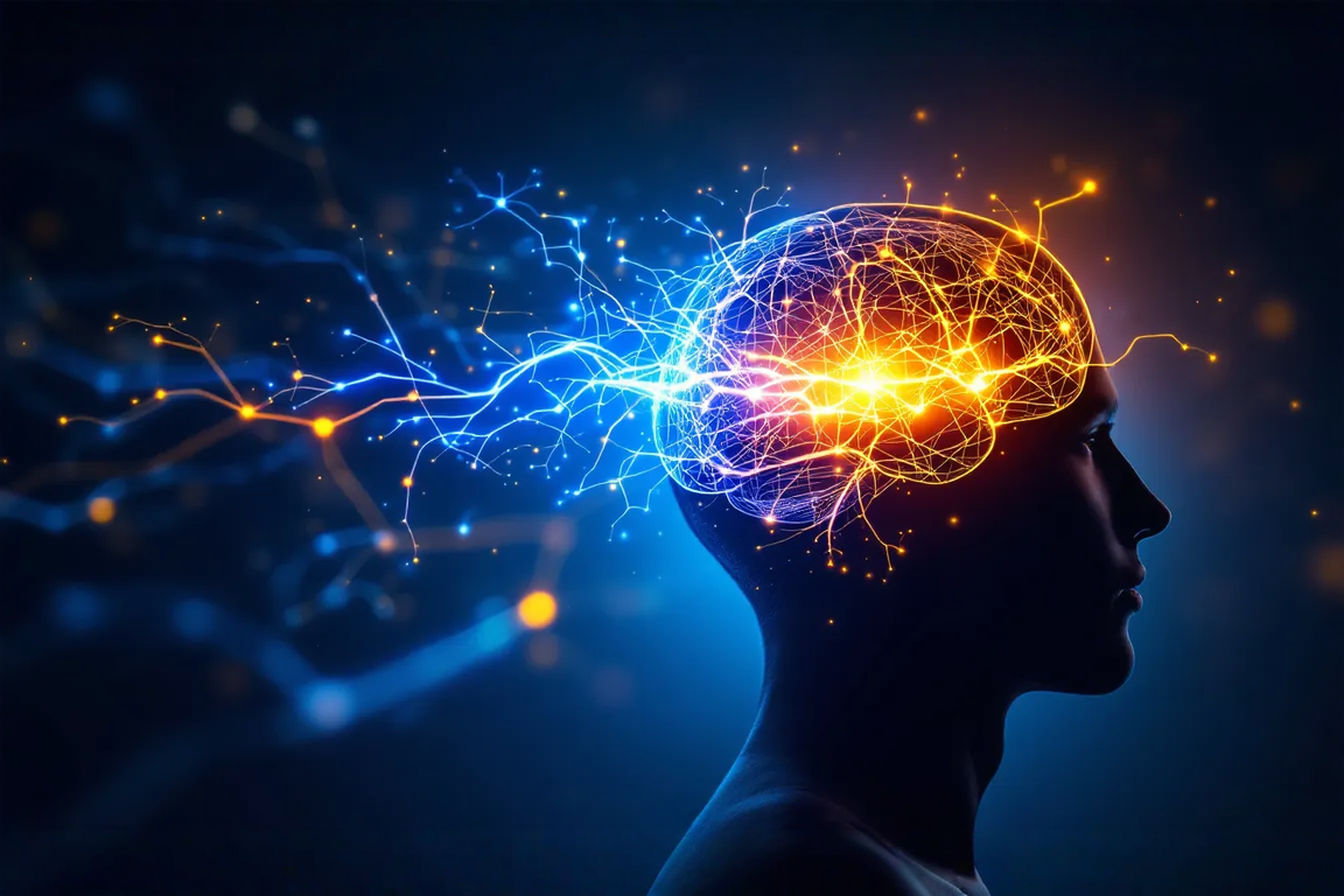This post may contain affiliate links. If you make a purchase through these links, we may earn a commission at no additional cost to you.
Sarah stared at her computer screen, feeling the familiar fog settling over her mind. Despite having three more hours before her deadline, she couldn’t focus. Her third coffee of the day sat cold beside her keyboard. The project was important, but her body felt heavy, her emotions frayed, and her motivation had vanished. The problem wasn’t time—she had blocked off her entire afternoon. What Sarah lacked was energy.
This scenario plays out daily for millions of people. We’ve been taught that productivity is primarily about managing time, creating to-do lists, and pushing through fatigue. Yet this approach fundamentally misunderstands human performance. The true currency of productivity isn’t time—it’s energy.
Enter the four energy dimensions framework—a revolutionary approach to performance and wellbeing developed by performance psychologist Jim Loehr and journalist Tony Schwartz. Their research revealed that sustainable high performance comes from managing energy across four distinct but interconnected dimensions: physical, emotional, mental, and spiritual.
Unlike time, which is finite and linear, energy can be systematically expanded and renewed. This paradigm shift transforms how we approach work and life. By understanding and optimizing each energy dimension, you can dramatically increase your capacity for accomplishment while enhancing your overall wellbeing.
This comprehensive guide explores each energy dimension in depth, providing science-backed strategies to assess, expand, and renew your energy reserves. Whether you’re an executive managing complex responsibilities, a parent juggling multiple demands, or simply someone seeking greater vitality and engagement, mastering these four dimensions will fundamentally transform your relationship with performance.
Understanding Energy Management: A Paradigm Shift
Traditional productivity systems focus almost exclusively on managing time. They encourage us to schedule every minute, eliminate distractions, and squeeze more activities into each day. This approach treats humans like machines—input more time, output more work.
The problem? Humans aren’t machines. We’re biological organisms that pulse between energy expenditure and recovery. Unlike time, which flows in one direction, energy operates in cycles and can be renewed through specific practices.
Scientific research across fields from physiology to neuroscience confirms this oscillatory nature. Our bodies function according to ultradian rhythms—90 to 120-minute cycles of high-energy focus followed by periods where our bodies and minds need recovery. Fighting against these natural rhythms leads to diminishing returns and eventual burnout.
Energy management represents a fundamental paradigm shift. Rather than asking “How do I find more time?” we ask “How do I optimize my energy when I need it most?” This approach acknowledges human limitations while providing pathways to expand capacity over time.
The oscillation principle sits at the heart of effective energy management. Strategic disengagement—taking brief, intentional breaks—isn’t a productivity failure but rather the secret to sustaining high performance. These recovery periods allow our energy systems to recharge, much like interval training builds physical fitness more effectively than constant exertion.
Energy rituals—specific, intentional practices performed at the same time each day—provide the structural foundation for energy management. Unlike relying on willpower, which depletes throughout the day, rituals become automatic through consistent practice, requiring minimal decision-making energy to maintain.
Before diving into specific dimensions, consider conducting a personal energy audit. Reflect on each dimension: When do you feel most physically energized? When do your emotions support or drain your energy? How does your mental focus fluctuate? When do you feel most connected to purpose? This awareness provides the starting point for transformation.
The Physical Dimension: Foundation of Energy
Physical energy forms the foundation of all other energy dimensions. Without adequate physical capacity, emotional regulation, mental focus, and spiritual connection become substantially more difficult to maintain.
At its most basic level, physical energy derives from the biochemical processes in our cells. Mitochondria—the cellular power plants—convert oxygen and nutrients into adenosine triphosphate (ATP), the fundamental energy currency of the body. Every thought, emotion, and action requires ATP expenditure, making physical energy management essential to all aspects of performance.
Several key components make up effective physical energy management:
Sleep quality and quantity stand as perhaps the most critical yet undervalued aspect of energy management. During sleep, the body repairs tissues, consolidates memories, and restores energy reserves. Research consistently shows that even mild sleep deprivation (6 hours instead of 7-8) significantly impairs cognitive function, emotional regulation, and physical performance. Prioritizing sleep hygiene—consistent bedtimes, screen-free wind-down routines, and optimized sleep environments—pays enormous dividends across all energy dimensions.
Nutrition profoundly influences energy availability and stability. The body requires consistent fuel that provides sustained energy rather than dramatic spikes and crashes. Complex carbohydrates, healthy fats, and adequate protein help maintain stable blood glucose levels. Strategic meal timing—eating at regular intervals rather than skipping meals or overeating—prevents energy dips throughout the day.
Physical movement serves as both an energy expender and generator. Regular exercise increases mitochondrial density, cardiovascular capacity, and muscular endurance—all of which expand your overall energy capacity. Even brief movement breaks (5-10 minutes of walking, stretching, or simple exercises) can refresh physical energy during work periods.
Breathing techniques offer perhaps the most immediate physical energy intervention available. Under stress, breathing typically becomes shallow and rapid, reducing oxygen intake and triggering the sympathetic nervous system’s fight-or-flight response. Conversely, slow, deep breathing activates the parasympathetic “rest and digest” system, reducing stress hormones and restoring energy.
Physical energy depletion manifests through symptoms like persistent fatigue, decreased physical resilience, frequent illness, poor recovery from exercise, and reliance on stimulants like caffeine. These warning signs indicate the need for physical energy renewal strategies.
To build physical energy reserves, consider implementing these practices:
- Schedule 7-8 hours of sleep nightly with consistent sleep/wake times
- Plan three balanced meals and one or two nutritious snacks daily
- Engage in cardiovascular exercise 3-4 times weekly
- Incorporate strength training 2-3 times weekly
- Take brief movement breaks every 90 minutes
- Practice diaphragmatic breathing for 5 minutes twice daily
- Maintain proper hydration by drinking water throughout the day
Physical energy supports all other dimensions. When physically depleted, emotional regulation becomes more difficult, mental focus diminishes, and connecting to purpose feels nearly impossible. By establishing a strong physical foundation, you create the capacity to excel in other energy dimensions.
The Emotional Dimension: Energy Quality
If physical energy provides the quantity of energy available to you, emotional energy determines its quality. Your emotional state profoundly influences how energy gets utilized, directed, and experienced.
Emotions aren’t simply feelings—they’re complex neurophysiological states that involve the autonomic nervous system, hormone production, and brain activation patterns. Positive emotions like joy, interest, and contentment broaden attention, enhance creativity, and improve resilience. Negative emotions like anxiety, frustration, and resentment narrow focus, restrict thinking, and rapidly deplete energy reserves.
The energy cost of negative emotions is substantial. Research shows that experiencing persistent negative emotions increases cardiovascular strain, impairs immune function, and reduces cognitive flexibility. One hour of intense anger or anxiety can leave you feeling as depleted as several hours of focused work.
Key components of emotional energy management include:
Emotional awareness serves as the foundation for emotional energy management. You cannot regulate what you don’t recognize. Developing the ability to identify emotional states as they arise—before they fully take hold—allows for more effective regulation. Regular emotional check-ins throughout the day build this awareness muscle.
Emotional regulation strategies provide tools to shift from energy-depleting emotional states to more productive ones. These include cognitive reframing (finding alternative interpretations of challenging situations), perspective-taking (considering the bigger picture), and distancing techniques (observing emotions without identifying with them).
Positive emotion cultivation actively generates emotional states that enhance energy and effectiveness. Activities like expressing gratitude, savoring positive experiences, performing acts of kindness, and celebrating progress trigger neurochemical changes that expand emotional capacity and resilience.
Social connection represents one of the most powerful sources of emotional energy renewal. Quality social interactions trigger the release of oxytocin, reduce cortisol levels, and activate the parasympathetic nervous system. Even brief positive social exchanges can significantly boost emotional energy.
Signs of emotional energy depletion include irritability, emotional reactivity, decreased patience, pessimistic outlook, emotional numbness, and social withdrawal. When these symptoms appear, targeted emotional renewal becomes essential.
To enhance emotional capacity, consider these practices:
- Begin each day by identifying your desired emotional state
- Schedule brief moments to express gratitude or appreciation
- Create boundaries around energy-draining people or interactions
- Build recovery periods after emotionally challenging situations
- Develop a “positivity portfolio” of memories, images, or messages that reliably generate positive emotions
- Nurture meaningful social connections daily
- Practice self-compassion during difficult moments
Emotional energy powerfully influences other dimensions. Positive emotional states enhance physical energy by reducing unnecessary tension and strain. They improve mental energy by broadening attention and enhancing creative thinking. They connect us more deeply to purpose, strengthening spiritual energy. By cultivating emotional mastery, you dramatically increase the effectiveness of all your energy investments.
The Mental Dimension: Focus and Clarity
Mental energy governs our ability to concentrate, think clearly, and process information effectively. In our increasingly distracted world, mental energy has become perhaps the most precious and scarce resource for many professionals.
Cognitive science reveals that the brain, despite representing only 2% of body weight, consumes approximately 20% of the body’s energy. Complex thinking, sustained attention, and information processing demand substantial glucose and oxygen. Understanding how to manage this energy expenditure dramatically improves mental performance.
Key components of mental energy management include:
Attention management practices recognize that attention, not time, represents the more fundamental productivity resource. Techniques like time blocking (dedicating specific periods to single tasks), digital minimalism (reducing technological distractions), and environmental design (creating spaces conducive to focus) preserve precious mental energy.
Single-tasking embraces the brain’s preference for focused work. Despite the cultural celebration of multitasking, cognitive research consistently demonstrates that attempting multiple complex tasks simultaneously reduces performance on all tasks while increasing mental energy expenditure. Deep focus on one task at a time produces better results with less energy depletion.
Cognitive load optimization involves strategically managing information intake. The brain has limited working memory capacity. Excessive information consumption—through constant email checking, social media browsing, or news consumption—fills this limited space with often-unimportant information, leaving insufficient capacity for complex thinking.
Strategic mental breaks allow for necessary recovery. The brain operates optimally when alternating between focused attention and mind-wandering states. Brief periods of mental disengagement—through nature exposure, meditation, or non-demanding activities—replenish neural resources needed for sustained concentration.
Information consumption habits significantly impact mental energy availability. Curating high-quality information sources, practicing digital boundaries, and implementing information filters help prevent cognitive overload and preserve mental energy for high-value thinking tasks.
Signs of mental energy depletion include difficulty concentrating, increased distractibility, procrastination tendencies, decision fatigue, decreased cognitive flexibility, and problem-solving challenges. These symptoms signal the need for mental energy renewal.
To preserve and enhance mental capacity, consider these practices:
- Schedule 60-90 minute periods of uninterrupted deep work
- Take brief mental renewal breaks every 90 minutes
- Practice mindfulness meditation for 10-20 minutes daily
- Capture important thoughts in a trusted system to free mental space
- Implement digital boundaries (specific times for email and social media)
- Prioritize complex cognitive tasks during your peak mental energy period
- Reduce unnecessary decisions through routines and simplification
Mental energy directly influences decision quality, problem-solving capability, and creative insight. When mentally depleted, decisions tend toward impulsivity, problem-solving becomes rigid, and innovation diminishes. By managing mental energy effectively, you preserve cognitive resources for your most important thinking challenges.
The Spiritual Dimension: Purpose and Alignment
The spiritual dimension of energy—often the most misunderstood—may actually be the most powerful. This dimension concerns your connection to purpose, values, and meaning. It provides the “why” behind your actions and serves as the ultimate source of motivation and resilience.
To clarify: spiritual energy doesn’t necessarily involve religious practice (though it can for those who are religious). Rather, it encompasses the energy that comes from living in alignment with your deepest values and serving something larger than yourself. When spiritual energy is strong, you can endure almost any physical, emotional, or mental challenge because your actions feel deeply meaningful.
Key components of spiritual energy management include:
Purpose clarity involves defining what truly matters to you and how your unique strengths can serve others. Having a clear purpose doesn’t mean having your entire life figured out—it means understanding the impact you want to have and the direction you want to move. This clarity provides a decision-making framework that preserves energy otherwise spent on uncertainty.
Values alignment requires identifying your core values and structuring life choices to honor them. The energy drain from living out of alignment with values is substantial but often unrecognized. Small daily choices that contradict your values create internal conflict that depletes spiritual energy.
Meaning-making involves the practice of finding significance in everyday experiences. Those with strong spiritual energy don’t just find meaning in obviously important moments—they actively create meaning from routine activities by connecting them to larger purposes and values.
Connection to something larger than self expands spiritual capacity. This might involve religious faith, environmental stewardship, community service, or dedication to a cause. This connection provides perspective during challenges and generates energy through the sense of participation in something enduring.
Contribution and service represent powerful spiritual energy sources. Helping others triggers neurobiological responses that reduce stress hormones while increasing endorphins and oxytocin. Beyond these physiological benefits, seeing your actions positively affect others provides profound energy renewal.
Signs of spiritual energy depletion include feeling purposeless, questioning the value of your work, sensing a disconnect between daily activities and personal values, experiencing existential boredom, and feeling isolated rather than connected to others. These symptoms indicate the need for spiritual renewal practices.
To deepen spiritual capacity, consider these practices:
- Begin each day by connecting with your core purpose
- Reflect regularly on how your actions align with your values
- Dedicate time to activities that feel intrinsically meaningful
- Practice gratitude for opportunities to use your strengths
- Find ways to serve others using your unique capabilities
- Spend time in environments that inspire awe (natural settings, art, music)
- Connect with communities that share your values and purpose
Spiritual energy provides sustainability to all other dimensions. Physical disciplines become easier when connected to purpose. Emotional resilience increases when challenges connect to meaningful goals. Mental focus sharpens when applied to purposeful work. By developing spiritual capacity, you create the foundation for sustainable energy management across all dimensions.
Integration: The Energy Matrix in Action
While understanding each energy dimension individually is valuable, the true power of this framework emerges when you recognize how these dimensions interact and influence each other. The four energy dimensions don’t operate in isolation—they form an integrated matrix of human capacity.
The relationship between dimensions can be both hierarchical and interconnected. In a hierarchical sense, physical energy forms the foundation upon which other dimensions build. Without basic physical energy, managing emotional, mental, and spiritual energy becomes extremely difficult. However, the dimensions also operate as an interconnected system where each influences the others bidirectionally.
Consider these dimension interactions:
- Physical exercise (physical dimension) reliably boosts mood (emotional dimension)
- Positive emotions (emotional dimension) improve cognitive flexibility (mental dimension)
- Clear purpose (spiritual dimension) increases physical resilience during challenges
- Mental focus (mental dimension) allows better emotional regulation
- Connection to purpose (spiritual dimension) motivates physical self-care
These interconnections explain why comprehensive energy management produces exponentially better results than focusing on any single dimension.
Conducting a personal energy audit across dimensions reveals your unique energy profile. For one week, track your energy in each dimension several times daily on a simple 1-10 scale. Look for patterns: When does each energy type peak or dip? How do dimensions influence each other in your experience? Which dimension consistently scores lowest? This assessment provides crucial data for creating your personalized energy management system.
Creating a balanced energy portfolio involves dedicating appropriate attention to each dimension based on your current capacity gaps. While all dimensions matter, most people have one dimension that serves as their primary limiting factor. Identifying this “weakest link” allows for targeted investment that produces outsized returns.
Developing cross-dimensional energy rituals leverages the interconnected nature of energy. For example, a morning ritual might combine physical movement, emotional centering, mental planning, and purpose connection in a 15-minute sequence. This integrated approach maximizes energy renewal efficiency.
Examples of integrated energy management in daily life include:
- Taking a walking meeting (physical) with a colleague you enjoy (emotional) to solve a complex problem (mental) that serves your larger purpose (spiritual)
- Practicing mindful eating by selecting nutritious foods (physical), savoring the experience (emotional), eating without distractions (mental), and expressing gratitude (spiritual)
- Beginning the day with exercise (physical), followed by journaling about positive expectations (emotional), planning priority tasks (mental), and connecting with your purpose (spiritual)
The energy matrix concept transforms how you approach challenges. Rather than addressing problems from a single dimension, you develop multi-dimensional solutions that create reinforcing energy cycles.
Implementation: Creating Your Energy Management System
Translating energy dimension understanding into daily practice requires creating systems that support consistent energy management. The foundation of this system is the energy ritual concept.
Energy rituals are specific, consistent practices performed at designated times that gradually become automatic, requiring minimal willpower to maintain. Unlike habits, which often develop unconsciously, rituals are intentionally designed to serve specific energy management purposes.
Effective energy rituals share several characteristics:
- Specificity: Precisely defined actions and timing
- Consistency: Performed at the same time each day
- Progression: Gradually increasing duration or intensity
- Accountability: Tracked and measured
- Renewal-focused: Designed to expand or restore energy
Designing energy renewal breaks throughout the day recognizes the natural ultradian rhythm of performance. Scheduling brief recovery periods (5-15 minutes) every 90 minutes prevents energy depletion while maintaining productivity. These breaks might involve physical movement, emotional reset techniques, mental disengagement, or purpose reconnection—depending on which energy dimension needs renewal.
Weekly energy planning complements traditional time planning by forecasting energy demands and scheduling appropriate renewal periods. Review your upcoming week, identifying high-energy demand activities and strategically placing recovery periods before and after them. Block time for activities that expand each energy dimension. This approach ensures you have the energy capacity to match your commitments.
Environment design powerfully supports energy management. Physical spaces influence behavior more than willpower alone. Creating environments that trigger positive energy rituals while minimizing energy-depleting temptations makes energy management significantly easier. This might involve creating a dedicated meditation space, preparing healthy snacks in advance, or designing a distraction-free work environment.
Digital habits profoundly impact all energy dimensions. Implementing boundaries around technology use—specific times for email and social media, notification management, screen-free periods—preserves mental energy while reducing emotional reactivity. Creating transition periods between digital and non-digital activities allows for mental recovery.
Managing energy in relationships and teams extends the energy dimension framework beyond individual practice. Understanding that all human interactions involve energy exchange allows for more conscious relationship management. Identifying energy-enhancing interactions and minimizing energy-depleting ones improves both personal capacity and team dynamics.
Measuring progress requires establishing energy metrics that matter. While traditional productivity focuses on output metrics (tasks completed, hours worked), energy management emphasizes capacity metrics (recovery quality, energy availability, engagement level). Tracking these indicators provides insight into your expanding energy capacity over time.
Advanced Applications: Energy Management for Peak Performance
Once you’ve established fundamental energy management practices, advanced applications allow you to optimize performance in specific contexts and challenges.
Applying the four dimensions in high-pressure situations provides perhaps the most valuable advanced application. During periods of intense demand—project deadlines, competitive situations, crisis management—deliberately cycling through all four energy dimensions prevents depletion while maintaining effectiveness. Brief but strategic renewal in each dimension keeps your full capacity available when it matters most.
Energy management for leadership effectiveness recognizes that leaders serve as energy conduits for their organizations. Leaders must maintain their personal energy while also catalyzing energy in others. This requires exceptional self-awareness about personal energy patterns combined with attunement to team members’ energy needs. Leaders who master energy management create environments where sustainable high performance becomes possible for everyone.
Team energy dynamics extend beyond individual energy management. Different team members naturally excel in different energy dimensions. Some bring physical enthusiasm, others emotional intelligence, others mental clarity, and others purpose connection. Recognizing and leveraging these diverse energy strengths creates teams with comprehensive energy capacity.
Long-term energy capacity building versus short-term fixes represents an important advanced distinction. While immediate energy management techniques provide valuable benefits, systematic capacity expansion in each dimension yields compound returns over time. Physical training, emotional regulation practice, mental focus development, and purpose refinement gradually expand your overall energy capacity.
Seasonal energy management strategies acknowledge that energy needs and availability fluctuate throughout the year. Aligning energy investments with natural seasons and personal productivity cycles enhances effectiveness. This might involve scheduling demanding projects during high-energy seasons while focusing on renewal and capacity building during naturally lower-energy periods.
Energy management during life transitions and challenges takes on particular importance during high-demand periods like career changes, relationship transitions, or health challenges. During these periods, energy depletion risk increases while renewal opportunities often decrease. Creating simplified but non-negotiable energy rituals during transitions preserves essential capacity.
Future trends in energy-based performance optimization include technological advances in energy monitoring (wearable devices tracking physical, emotional, and cognitive states), organizational shifts toward energy-optimized work environments, and increased integration of ancient wisdom practices with modern performance science. Staying current with these developments allows for continuous refinement of your energy management approach.
Conclusion
The four energy dimensions framework fundamentally transforms our understanding of human performance and wellbeing. By recognizing that energy—not time—represents our most crucial resource, we gain access to previously untapped capacity.
Physical energy provides the foundation, offering the baseline capacity for action and engagement. Emotional energy determines the quality of our experience and influences our interpersonal effectiveness. Mental energy governs our ability to focus, think clearly, and make wise decisions. Spiritual energy connects us to purpose and meaning, providing the ultimate source of motivation and resilience.
These dimensions operate as an integrated system, each influencing and amplifying the others. By developing capacity across all four dimensions and managing energy oscillation through strategic renewal, we create sustainable high performance that enhances rather than depletes wellbeing.
The paradigm shift from time management to energy management changes everything. Rather than squeezing more activities into limited time, we expand our capacity to bring full engagement to our most important activities. Rather than running faster on the hamster wheel of busyness, we step into a rhythmic dance of engagement and renewal.
Your journey toward energy mastery begins with awareness. Start by observing your current energy patterns across all four dimensions. Identify your energy drains and sources of renewal. Then implement just one energy ritual in your most depleted dimension. This simple step initiates a positive cycle that gradually transforms your relationship with energy.
The vision of full engagement living extends beyond personal productivity. It promises a life of greater impact, deeper connection, and more authentic joy. By mastering your energy dimensions, you don’t just accomplish more—you bring your full and best self to everything that matters most.






